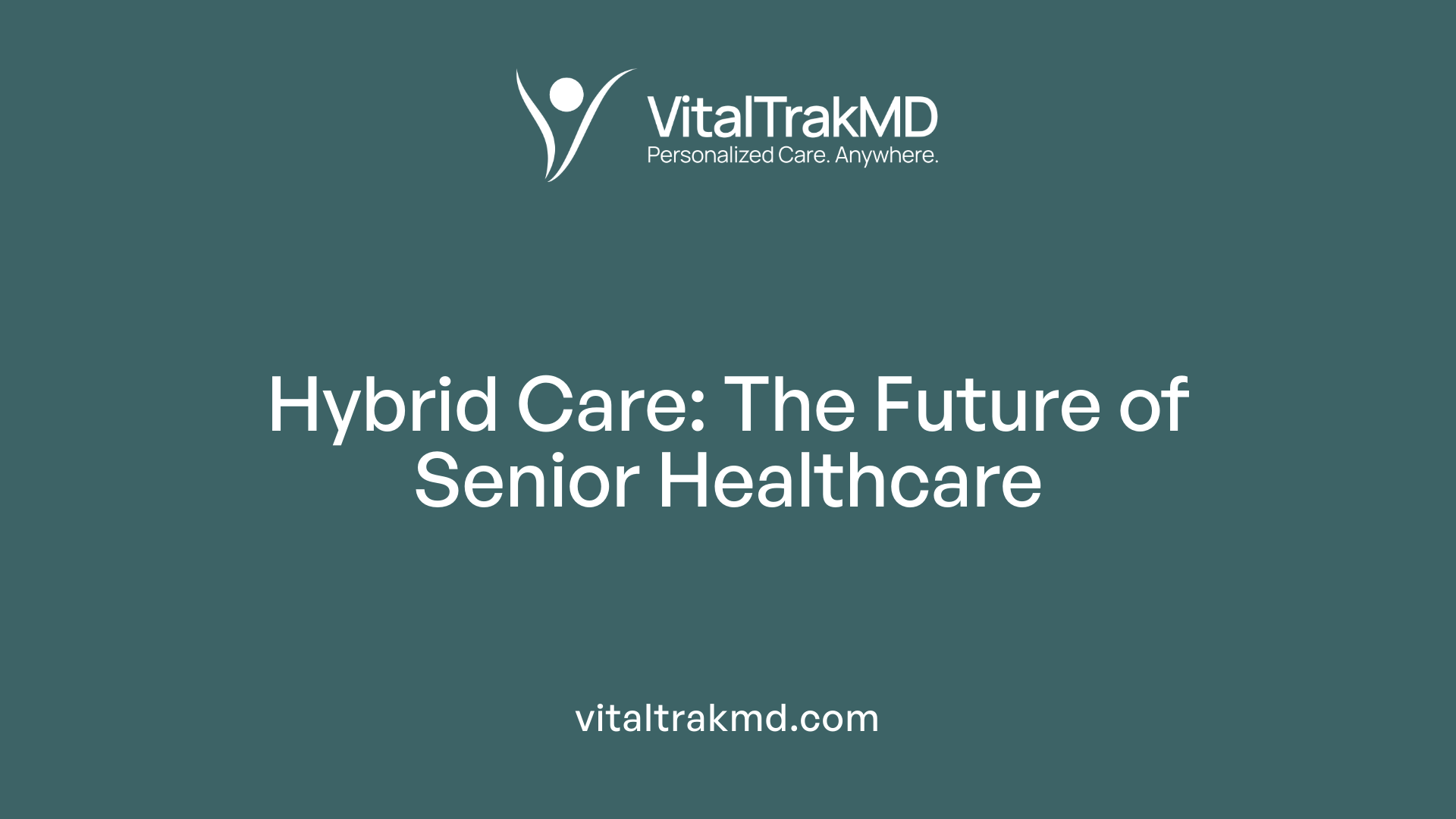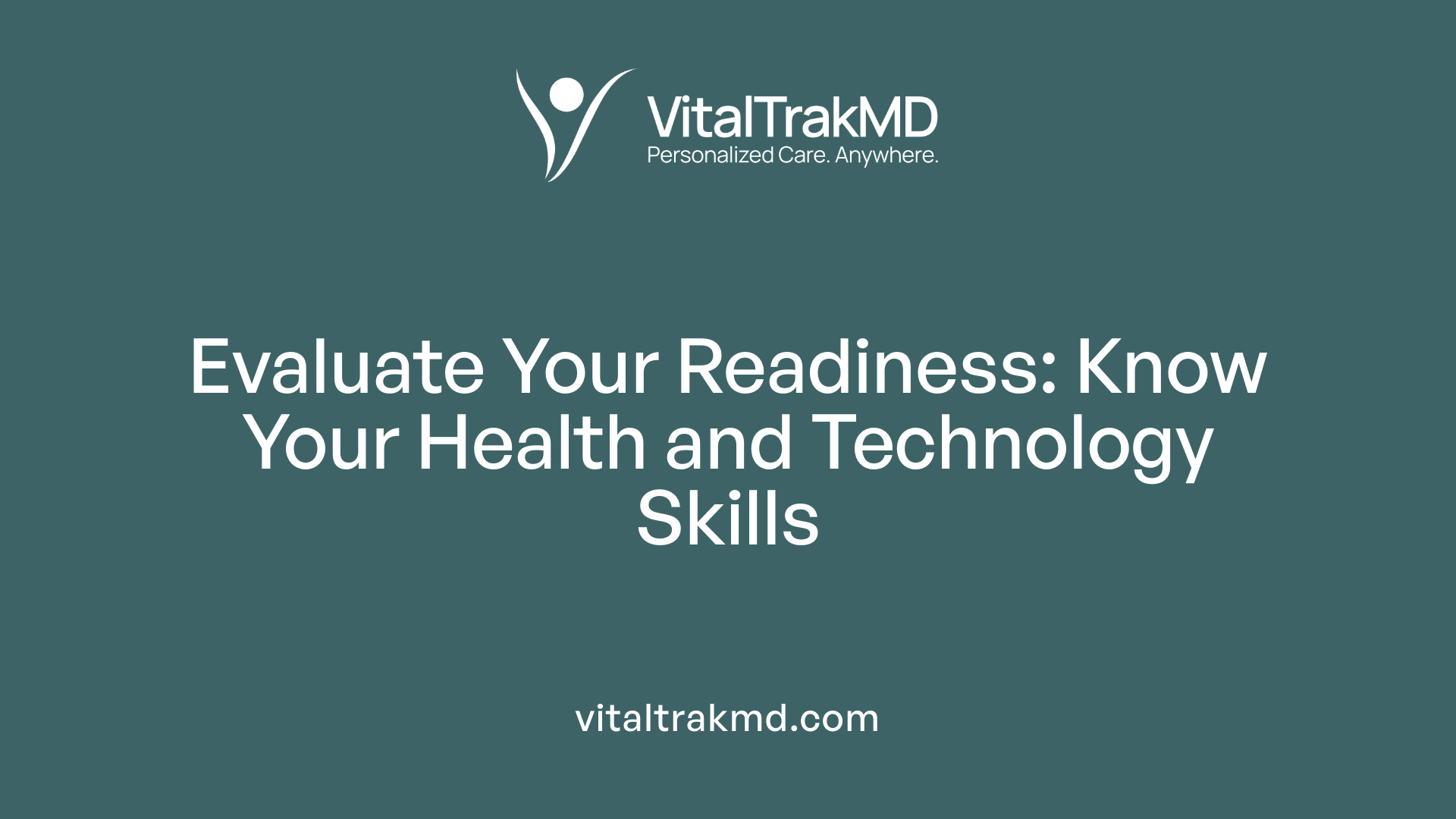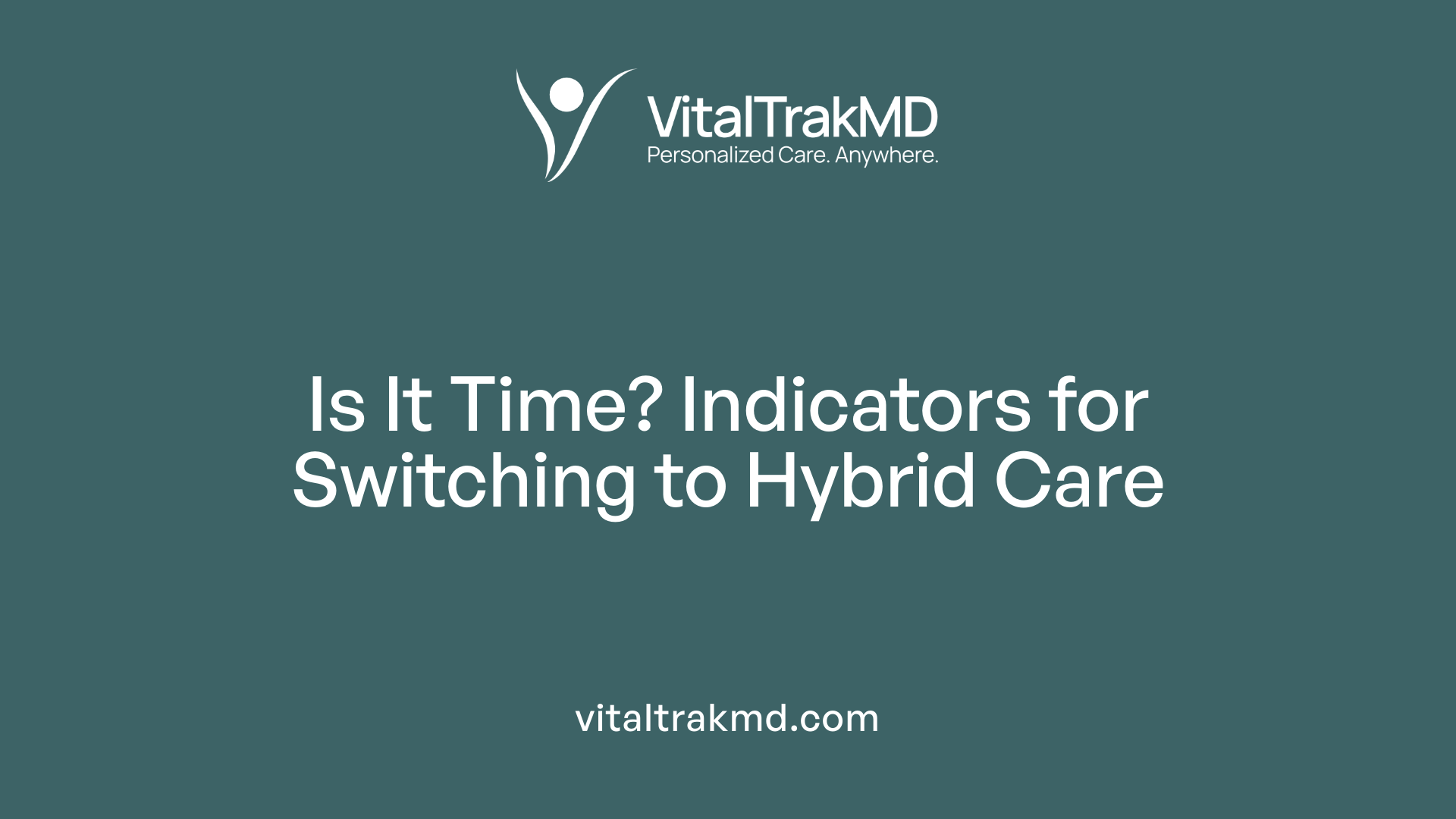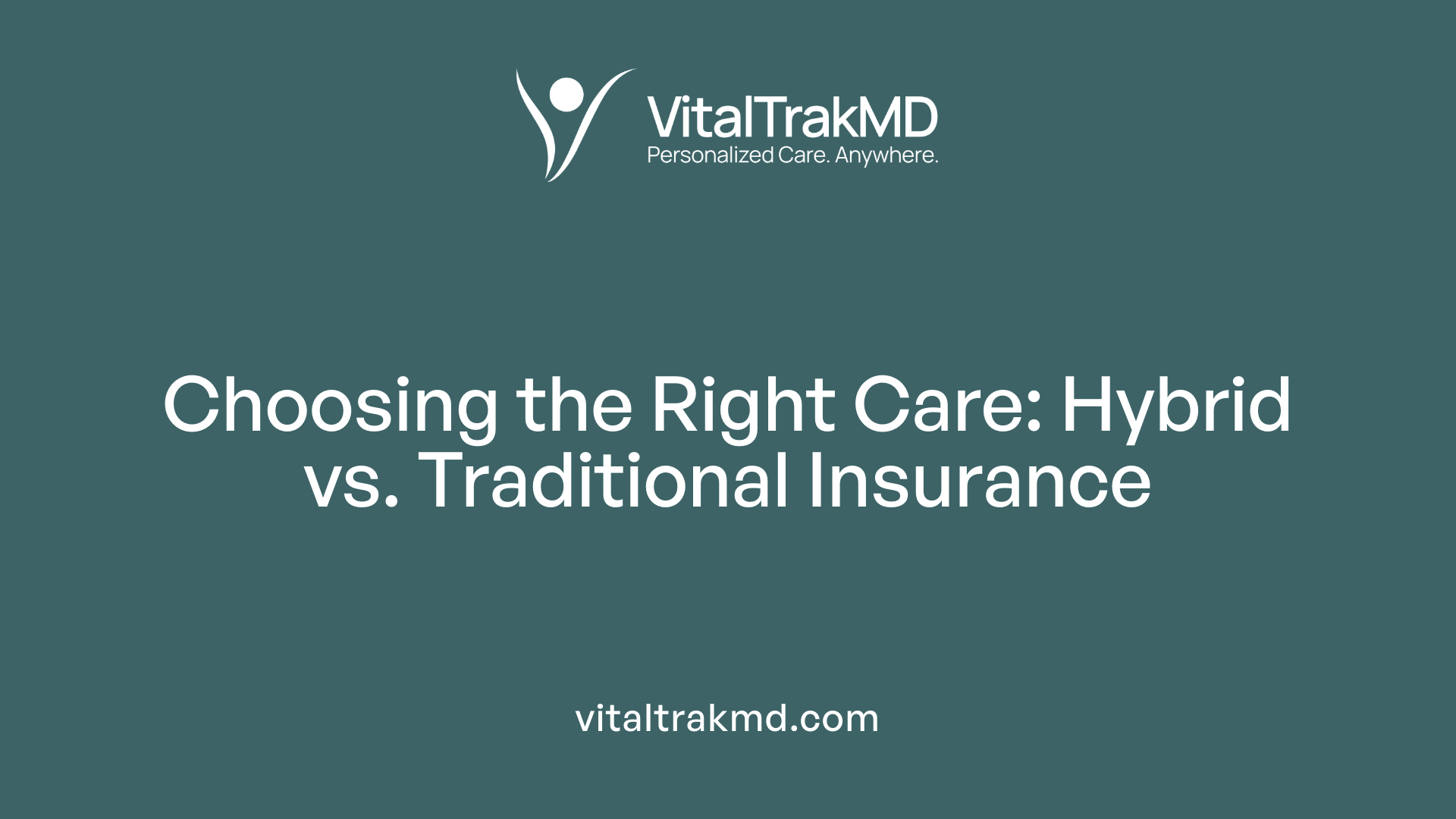When Should Seniors Switch to a Hybrid Care Program?

Understanding the Shift to Hybrid Care for Seniors
As the landscape of senior healthcare evolves, hybrid care programs—combining traditional in-person services with remote, telehealth-based options—are increasingly becoming the preferred model. This approach offers flexibility, personalized care, and efficiency, making it vital for seniors, their families, and caregivers to recognize the right timing for such a transition. In this article, we'll explore the critical factors influencing when seniors should switch to hybrid care, compare insurance options, and highlight strategies to make this shift smoothly and effectively.
The Growing Prominence of Hybrid Care Models

Rise of hybrid senior housing and healthcare options
Hybrid models of senior housing and healthcare are becoming increasingly prevalent. These innovative environments combine multiple levels of care within a single community, allowing residents to transition smoothly as their needs evolve. From independent living to assisted care, rehabilitation, and skilled nursing, hybrid senior housing caters to the full spectrum of aging requirements.
Designed to offer flexibility, these communities reduce the disruption and cost of moving multiple times. They are often managed by large corporations that integrate healthcare services directly into the living environment, making care more accessible and coordinated.
Historically rooted in religious and benevolent organizations, modern hybrid senior housing has grown into sophisticated models that blend comfort with comprehensive services. The evolution reflects a broader industry shift towards providing adaptable, occupant-centered care options.
Consumer demand for accessible, real-time care
Older adults now expect timely access to healthcare services, especially in the context of managing chronic conditions or sudden health changes. The demand for accessible, real-time care has surged, driven partly by technological advancement and increased awareness of healthcare options.
Patients prefer flexible models that accommodate their preferences for in-person or virtual visits. Telehealth and remote monitoring are integral to this shift, enabling continuous health management without the need for frequent travel to clinics.
Hybrid healthcare models are designed to meet these needs by offering a mix of in-home, telemedicine, and in-person services, enhancing patient satisfaction and engagement.
Impact of COVID-19 on telehealth adoption
The COVID-19 pandemic significantly accelerated the adoption of telehealth and hybrid healthcare services. Healthcare providers in the U.S. and abroad quickly integrated virtual visits into their practice, demonstrating that many routine and chronic care appointments could safely be conducted remotely.
Most primary care providers have learned to manage in-person visits safely and efficiently during this period, and many have adopted hybrid approaches that combine virtual consultations with face-to-face care.
Older adults with chronic health conditions benefit particularly from these models, as they allow ongoing monitoring and management without repeated exposure to healthcare settings, thereby reducing infection risk.
Geographical factors also influence telehealth use, with residents in metropolitan areas more likely to participate due to better internet access and infrastructure.
Current landscape and future prospects
The adoption of hybrid care is expected to continue rising, supported by government funding, technological improvements, and evolving consumer preferences. For instance, in Australia, it's projected that by 2030, most older adults will prefer some or most of their care delivered remotely.
Healthcare providers across various disciplines — including mental health and allied health services — are expanding their remote care offerings. Industry forecasts suggest that remote-enabled care could nearly double by 2025.
The development of integrated electronic medical records (EMRs) is crucial to sustain quality and safety in these hybrid systems. Companies like ChenMed have pioneered fully integrated EMRs that support both virtual and in-person encounters.
Patient-centered and flexible care models
Flexibility in care delivery is vital. Patients’ needs, technological access, and personal preferences influence their participation and satisfaction with hybrid models. Offering options for both in-person and remote visits, while maintaining high care standards, is essential.
For example, telehealth is particularly effective for managing chronic conditions where remote monitoring devices can relay critical data. However, not all appointments are suitable for telehealth, especially those requiring physical exams or complex procedures.
Healthcare providers aim to create seamless processes for both modalities, using integrated EMRs to reduce errors and improve coordination.
Future and policy implications
Government support and policy adjustments will play roles in further solidifying hybrid care models. Funding initiatives and value-based payment systems incentivize providers to adopt coordinated, patient-centered approaches.
Overall, hybrid healthcare models are expected to become the standard, especially as technological innovations and consumer preferences continue to shape healthcare delivery.
| Aspect | Details | Additional Notes |
|---|---|---|
| Industry shift | More integrated, flexible senior living | Driven by demand and policy changes |
| Technology role | Telehealth, remote monitoring, EMRs | Critical for seamless care |
| Patient demographics | Increasing use among older adults, especially with chronic conditions | More common in metro areas |
| Future outlook | Growth in adoption, nearly doubling by 2025 | Supported by funding and tech |
| Benefits | Accessibility, real-time care, reduced hospital visits | Improved quality of life |
Assessing Personal Readiness for Hybrid Care Transition

How can seniors assess if they are ready to transition to a hybrid care program?
Transitioning to a hybrid healthcare model involves both understanding and managing one’s health needs across in-person and remote settings. For seniors considering this shift, assessing their readiness is essential to ensure smooth and effective care.
One of the first steps is evaluating their knowledge of their health conditions. Seniors should know their diagnoses, treatment plans, and medications. This awareness allows them to communicate effectively with healthcare providers and engage confidently in virtual visits.
Managing medications properly is another critical aspect. Being able to organize, refill, and understand medication instructions demonstrates a level of independence that supports hybrid care. Skills in scheduling and attending both in-person and telehealth appointments also play a vital role.
Confidence in self-advocacy and self-efficacy — the belief in one's ability to manage health and navigate healthcare systems — significantly influences readiness. Seniors who feel comfortable voicing concerns and asking questions are better prepared to handle the changing environment.
Using standardized transition readiness assessments, known as TRAs, can provide a structured way to evaluate these factors. These tools help identify strengths and gaps in a senior’s ability to manage health following the move to a hybrid model.
Communication skills are equally important. Seniors should feel capable of discussing symptoms, treatment preferences, and concerns with healthcare providers, whether through in-person visits or virtual platforms.
Parental and caregiver involvement also impacts readiness. While independence is vital, support from trusted individuals can bolster confidence and provide assistance in managing technology or complex health decisions.
Consulting healthcare professionals for personalized advice and conducting evaluations with validated tools can offer a comprehensive picture of a senior’s preparedness. This process helps ensure they are equipped to benefit fully from the advantages of hybrid care.
Additional Resources and Search Tips
To explore further, searching for "senior transition assessment" online can lead to valuable tools, guidelines, and expert recommendations. These resources can support seniors and caregivers in preparing for a successful transition to hybrid healthcare models.
Factors Influencing the Decision to Switch to Hybrid Insurance and Healthcare Models

What factors influence the decision to switch to hybrid insurance policies or healthcare models?
Choosing between traditional and hybrid long-term care options depends on several personal and practical considerations. One of the main influences is an individual's current health status and anticipated future care needs. For example, those with chronic conditions or a higher risk of requiring extended care might lean toward hybrid policies that offer guaranteed benefits and a death benefit if care is not needed.
Age also plays a significant role. Younger seniors or those in good health often find lower premiums more affordable and may prefer traditional policies for dedicated long-term care. Conversely, older adults or those with health issues might consider hybrid plans for their added security and estate benefits.
Financial considerations are crucial in this decision-making process. Many individuals aim to protect their savings from the high costs of extended care services. Hybrid policies, which often include a death benefit and potential cash value, can also serve estate planning goals by providing financial benefits to heirs if care is unnecessary.
The availability and features of hybrid insurance policies heavily influence choices. These policies combine long-term care coverage with permanent life insurance, like universal or whole life policies, offering benefits such as locked-in premiums, flexible payout options, and discounts for spouses.
Regional factors, like the rising costs of care and healthcare access disparities, also impact decisions. In areas where long-term care expenses are substantial or expected to rise, proactive planning with hybrid options can help manage future financial risks.
Overall, the decision to switch or adopt hybrid models hinges on balancing personal health outlooks, financial goals, policy features, and regional healthcare landscapes. Consulting with financial advisors and comparing policy details are recommended steps to determine the most suitable approach for individual needs.
| Factor | Impact on Decision-Making | Additional Considerations |
|---|---|---|
| Current health status | Determines eligibility, premium costs, and coverage needs | Need for ongoing medical support |
| Age | Younger age favors lower premiums; older age may increase costs | Timing of purchase influences affordability |
| Financial goals | Protect savings and provide estate benefits | Priority of legacy planning |
| Policy features and availability | Preferences for cash value, death benefits, flexibility | Choice between traditional and hybrid policies |
| Regional healthcare costs | Rising costs encourage early, proactive planning | Local healthcare access and support systems |
Successful long-term care planning involves understanding these factors to make informed choices. The decision to move to hybrid insurance or healthcare models should align with personal health, financial stability, and long-term goals, ultimately ensuring better preparedness for future needs.
Benefits and Considerations at Different Aging and Health Stages

What are the benefits and considerations of transitioning to a hybrid care program at various stages of aging or health status?
Adopting a hybrid care program can be highly advantageous for seniors, especially when tailored to their specific health needs and living environments. One of the main benefits is the promotion of aging in place, allowing individuals to remain in their homes longer while receiving personalized care suited to their evolving health status.
Hybrid care combines in-person visits with remote health management tools such as telemedicine, remote monitoring devices, and fall alerts. This integration enhances safety by providing continuous oversight and early detection of health issues. For example, seniors with chronic conditions like hypertension or diabetes benefit from regular virtual check-ins and remote monitoring, which help prevent complications.
Transitioning to a hybrid model at different points in the aging process involves several considerations. For healthier seniors, hybrid systems can provide reassurance and support independence with minimal intrusion. Conversely, older adults with more advanced conditions, such as mobility impairments or cognitive decline, may require physical supervision in addition to remote support. Effective implementation depends on assessing each individual’s physical environment, technological literacy, and access to reliable internet.
Financial resources play a crucial role as well. While hybrid care can reduce overall healthcare costs, initial investments in technology and training may pose barriers for some seniors. Selecting user-friendly devices and ensuring adequate caregiver support are vital steps to facilitate smooth adoption.
Healthcare providers and families must collaborate to determine the appropriate level of technology and human assistance. Coordination among various healthcare providers is necessary to ensure continuity of care and to avoid gaps in service. For example, combining virtual consultations with in-home visits ensures comprehensive coverage for those with complex needs.
Despite its advantages, hybrid care faces challenges such as potential technology barriers for older adults, infrastructure limitations in certain regions, and cybersecurity concerns. Proper training and caregiver education are essential to maximize benefits.
Overall, hybrid care models provide flexible, continuous, and patient-centered support across all stages of aging and health status. They can improve quality of life, enhance safety, and support independence, provided that careful planning and appropriate resources are in place.
Indicators for Transition: Recognizing When Seniors Should Switch

What factors indicate that a senior should consider switching to a hybrid healthcare model?
As seniors age and their health conditions evolve, they may find that their traditional care arrangements need to adapt. Recognizing when to shift to a hybrid healthcare approach involves several observable factors.
Firstly, increasing care needs are a primary indicator. If a senior requires more frequent monitoring, assistance, or therapies—especially for chronic conditions—combining in-person and remote care can provide more flexible and comprehensive support. For example, ongoing management of diabetes or heart disease often benefits from remote monitoring tools alongside regular visits.
Secondly, health stability plays a crucial role. Seniors whose health remains relatively stable but still need periodic oversight are ideal candidates for hybrid models. Stable health enables remote monitoring and virtual check-ins to supplement occasional in-person appointments, reducing the burden of frequent clinic visits.
Acceptance and comfort with remote technologies are also essential. Those who are willing and able to use telehealth platforms, sensors, and connected devices can enhance their safety and care quality through hybrid services. Familiarity and confidence in these technologies make transitioning smoother and more effective.
Support systems at home significantly influence the decision. Having caregivers, family members, or a reliable support network at home ensures that remote care interventions are safely managed. Support systems contribute to early detection of issues and facilitate adherence to care plans.
Lastly, personal preferences and care goals matter. Seniors who seek greater autonomy, flexibility, or personalized care options often opt for hybrid models. These systems allow patients some control over their health management while still receiving professional oversight.
Regular assessment by healthcare providers helps identify suitability. Routine check-ups and discussions about changes in health status, technology adaptability, and support availability enable timely decisions about transitioning.
In summary, seniors should consider switching to a hybrid healthcare model when they experience an increase in health needs,maintain stability and are comfortable with technology, and have adequate support systems at home. These factors together create a foundation for effective and personalized hybrid care, promoting better health outcomes and quality of life for aging adults.
Timing and Implementation of Transition to Hybrid Care
When is the appropriate time for seniors to transition to a hybrid care program?
Deciding the optimal time for seniors to shift to a hybrid healthcare model depends on individual health status, mobility, and access to traditional in-person care. Generally, seniors who find it increasingly difficult to travel to healthcare facilities or require ongoing management for chronic conditions are good candidates for hybrid care.
This transition is especially pertinent when in-home care isn’t enough to meet their health needs, or when they face transportation barriers or long distances to clinics. During these times, blending virtual consultations with essential in-person visits provides a practical solution.
The COVID-19 pandemic has notably accelerated the adoption of hybrid care, highlighting its importance for maintaining continuity of care while minimizing exposure risks. Many older adults living in metropolitan areas, where access to telehealth infrastructure is more developed, have found hybrid models particularly beneficial.
Furthermore, seniors with nonacute, ongoing health concerns tend to benefit most from hybrid care, as it allows regular monitoring without frequent visits to healthcare facilities. Those with mobility challenges or living in rural areas may find hybrid models indispensable.
Consultation with healthcare providers is crucial in this process. An in-depth assessment of personal health conditions, living environment, technology access, and personal preferences can help determine the best timing for transition.
In summary, the appropriate time to adopt hybrid care varies per individual but is generally driven by increased care needs, barriers to in-person visits, and the desire for flexible, continuous healthcare access. Early planning and open communication with medical professionals can ensure a smooth, beneficial transition.
Comparing Insurance and Care Options: Making the Right Choice

How does hybrid long-term care insurance compare to traditional long-term care insurance, and when should one choose each?
Hybrid long-term care insurance integrates life insurance benefits with long-term care coverage. This dual purpose allows policyholders to access care benefits if needed and provides a death benefit if care is not utilized. It often involves paying a larger initial premium or installment payments, but these premiums are typically predictable and stable over time.
Traditional long-term care insurance, on the other hand, is a standalone policy designed specifically to cover extended care expenses such as skilled medical services, therapies, and assistance with daily living activities. It operates on a "use it or lose it" basis, meaning that if you do not claim benefits, the premiums paid don’t result in a cash refund or death benefit.
Hybrid policies tend to be more expensive than traditional options but come with advantages such as guaranteed death benefits, fixed premiums, and potential estate benefits for heirs. They also help mitigate the concern of
Planning Ahead for a Safer, Smarter Transition
Ultimately, the decision of when to switch to a hybrid care program hinges on individual health progression, financial considerations, and personal preferences. Early planning—ideally well before health declines or significant care needs—is crucial to lock in favorable premiums, select suitable policies, and ensure a seamless transition. Consulting with healthcare providers, financial advisors, and care coordinators can help identify the optimal timing and the most appropriate hybrid model tailored to each senior’s unique circumstances. As the healthcare landscape continues to evolve, proactive engagement with hybrid care options can significantly enhance quality of life, safety, and independence in older age.
References
- Long-term care vs. hybrid long-term care: Which is better, according ...
- Does Hybrid Long-Term Care Insurance Make Sense? - NerdWallet
- Comparing In-Person Only, Telemedicine Only, and Hybrid Health ...
- Setting a Solid Foundation for Hybrid Health Care Success - ChenMed
- What Are the Three Types of Long-Term Care Insurance?
- The Hybrid Care Model Is Here to Stay - InnovAGEING
- Hybrid Senior Housing Environments - CarePlanIt
- Should You Get Hybrid Long-Term Care Insurance? - Policygenius
Recent articles
Want to Feel Better and Live Healthier?
Join hundreds of patients taking control of their health with personalized care that fits their life – not the other way around.
Rated 4.8/5 by 32+ customers







